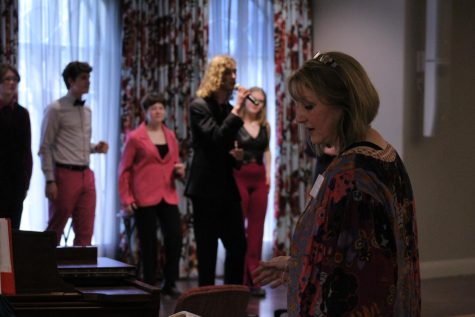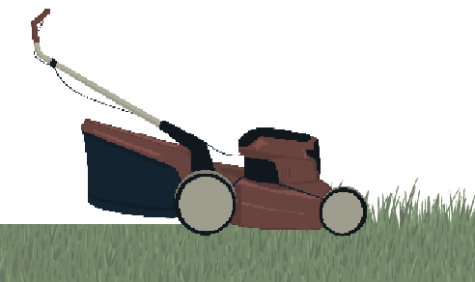Surviving the System
May 25, 2022
In 1969, when Linda Ross was 12-years-old, she and her eight siblings were removed from their home and placed in Foster Care. This was after her mother passed away from cancer, and her father, who was struggling with alcoholism, was unable to take care of her and her siblings.
Ross remembers the trauma of being forced to leave her home and leaving all her personal belongings behind.
“We were allowed to take three outfits each and that was it,” she said.
Ross’ experiences in the Foster Care system left an indelible impression on her young mind. Still to this day, children are enduring these challenges while moving through the system, trying to survive.
The needs of a child– viewed as a societal problem– were finally met around the 19th century. The earliest documentations in the old testaments and the Talmud contained paperwork of children being cared for in what we consider, foster care.
By the early 1900’s, keeping records, considering the needs of a child, along with foster parent screening were being conducted by social agencies. By this time, removing a child that was a victim of abuse or neglect in a home was authorized and validated by the United States government.
In 1980, the Adoption Assistance and Child Welfare Act was established, which encouraged child adoptions from nations’ foster care systems.
According to AdoptUSKids.org, 400,000 children are currently in Foster Care. 117,000 of those kids are awaiting to be adopted and about 20,000 are aging out of the system. Kaw Valley Center (KVC) Nebraska, a private non-profit organization that provides a variety of programs and services to people throughout the state says there are 3,000 children in Foster Care in Nebraska.
Court Appointed Special Advocates (CASA) is an organization in Lincoln, Nebraska, as well as 54 other counties, that works with the juvenile courts through volunteers advocating for the well-being of children in foster care. In 2021, 945 trained volunteers served 2,127 children in the system.
Hannah Lindblad, the Volunteer Coordinator at CASA in Lincoln, says their mission at CASA is “advocating for children that don’t always necessarily have a voice in the system, or maybe oftentimes don’t feel like their voices are being heard.”
She adds,“one reason why CASA volunteers are so great is because the child can have so many workers within a case, but theoretically, they’re only going to have one CASA volunteer.”
A part of advocating for the child(ren) is making sure they are being placed in a safe home. Lindblad explains the process in which a child endures going through the system and how certain decisions are being made.
“[The Department of Health and Human Services (DHHS)] is going to look to place them with a family member first just because living with family, it’s a lot less traumatic,” Lindblad said.
Looking out for the best interest in the child, Lindblad says “they’ll first try to find somebody in the area that can pass a background check. If there’s nobody available like that, then they’ll look for somebody that they know that already has a relationship with that child.”
This type of informal placement is also known as Kinship Homes. Lindblad says oftentimes, these consist of close family friends, teachers and sometimes pastors.
“If nobody like that can be identified right away, then they will look for more like a traditional foster home,” she said.
Lindblad explains that a traditional foster parent is “somebody that they don’t know but that’s licensed through the state.” She adds that each child and their case is different.
“From there, the court case proceeds and that can go a multitude of different ways,” Lindblad said.
Some challenges CASA and their volunteers see in the system is the “foster care to prison pipeline.” Essentially, this is the lack of preventative services that can be helpful to families before a crisis point is reached. Also, children of color are disproportionately represented in the Child Welfare system. Along with the number of kids aging out of the system– ages 18 to 21– CASA has found that they are facing higher rates of PTSD, homelessness, unemployment and unplanned pregnancy.
Lindblad says turnovers and inconsistencies with social workers create challenges for the system.
“[Social workers] don’t stay on a job very long. They usually have a really high turnover rate because the job is very, very, hard,” she said.
Lindblad points out that being a social worker is a very difficult job. The high rate of turnovers makes it difficult for a child to form lasting relationships with the Social Worker.
“Once a child forms a relationship or connection, then that person usually leaves,” she said.
Looking back on her experiences as a child, Ross feels that the system can improve. “There doesn’t seem to be any accountability anywhere,” Ross said. “I feel like there’s not enough follow up once the child is placed; I don’t feel the vetting of the foster parents is good. I don’t think it was then, and I don’t believe it is now.”
Of her eight siblings, two were adults who did not need to be placed in foster homes, but the other six were removed and placed in different homes. Some were lucky enough to be with a sibling, but some were alone. Ross entered the system with one other sibling.
“I happened to get into a fairly decent care facility and I was placed with another sibling,” Ross said. When Ross was removed from her childhood home, she said “it felt like we had done something wrong.”
But now as an adult, Ross knows that it isn’t the child’s fault. “[The] parents are troubled, but [the kids] are made to feel like they’re the problem,” she said.
Ross says what scared her the most was the factor of the unknown.
“We didn’t know any of the people,” she said. “We didn’t know where we were going or what was going on.”
Ross feels like the vetting system for foster parents needs to be improved.
“[The process] is very limited and not in-depth enough to really get a good understanding of who these folks are that are taking children in,” she said.
One of Ross’ sisters, six at the time, was not placed in a good home.
“She had to be removed from several homes because the people were, well, they were crazy,” she said. “They were trying to do exorcisms on children that they had in their care.”
When Ross’s sister tried to report what happened, the social worker didn’t believe her. “They believed the foster care parents over the children who were experiencing bad times,” she said.
Two of Ross’s brothers also struggled at the foster home.
“[They] were placed in a home with a couple who didn’t like children,” Ross said. ”When [the husband] would go to work, [the wife] would make [the kids] do all of their housework and then go to their rooms and stay there until the father came home and then acted like everything was fine.”
While Ross and her siblings were placed in foster care, her father was court ordered to rehab for his alcohol use. Six months later, the children, including Ross, were placed back into the home with the father, fresh out of rehab.
Ross’s dad regained custody of his kids after his stint in rehab. It had only been six months since they were first removed from the home. Ross says the situation at home had not improved.
“After my father got out of rehab, he married somebody that he met for two weeks and then picked us all back up from foster care and took us home, where they both continued to drink and be abusive,” she said.
Ross’s experience was just one out of thousands upon thousands that go through the system. CASA’s mission is to shine light on children around the state and nation to make sure kids have someone on their side. While CASA is still working to make a difference in the lives of kids, they are still in need of volunteers.
“We’re always looking for more volunteers because we always have kids waiting to have their case taken,” Lindblad says.



















